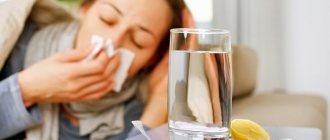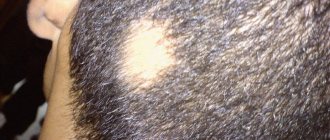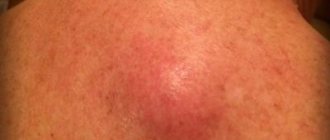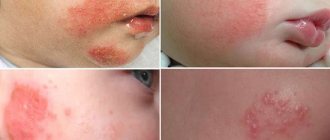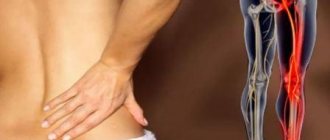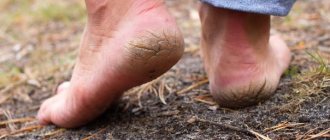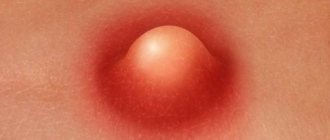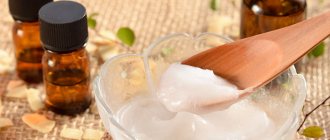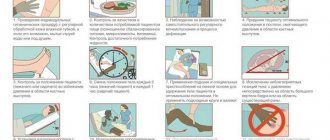Bronchitis most often begins as part of the flu or acute respiratory viral infection or as a complication of them, when a runny nose and red throat is accompanied by a dry, debilitating or wet cough, and if you help your body in time, quickly transform the dry cough into a wet one, then bronchitis can be cured faster than in 10 days.
However, with untimely treatment, disruption of a quiet semi-bed rest, or even worse - going to work sick, acute bronchitis easily turns into chronic. Read more about the symptoms and signs of bronchitis in adults in our article. We will tell you in this article how to treat bronchitis at home so that it does not become protracted or chronic.
Any treatment must be comprehensive:
- Active fight against virus and infection
- Improving bronchial patency, thinning mucus and removing it as quickly as possible
- Elimination of provoking factors
Main principles
Acute and chronic bronchitis are very serious diseases; they can be complicated by very serious diseases of the pulmonary system, which threaten not only a person’s health and ability to work, but also his life in general.
Self-medication without an objective examination in a medical institution usually leads to the fact that acute bronchitis in an adult patient is not completely cured, which is why it soon becomes chronic or complicated, for example, by pneumonia. Often people do not even suspect that they are developing cancer or tuberculosis under the mask of bronchitis.
The attitude of “it will go away on its own” or “I’ll cure it on my own without calling a doctor” is not applicable to bronchitis. And, of course, it is impossible to be treated for bronchitis while suffering the disease “on your feet.”
Treatment of bronchitis in adults is possible only on bed or semi-bed rest. But there are also “heroes” who continue to work during illness; they have every chance of acquiring cardiac complications or making acute bronchitis chronic.
Against the background of the disease, each sick person should increase the amount of drinking per day to at least 3-3.5 liters. Alkaline fruit drinks, juices, jelly, teas, hot milk with Borjomi in a one-to-one ratio are perfect for drinking.
The composition of the daily food intake undergoes several changes, which should become complete in terms of proteins and vitamins. The daily diet must contain a sufficient amount of proteins and vitamins. It is important to include as many fruits and vegetables as possible.
But if there is an elevated body temperature and there are signs of intoxication, then a short fast will be quite acceptable, but only if the body requires it.
- Folk remedies for the treatment of bronchitis
Important to remember. Diets that restrict anything in nutrition for bronchitis are strictly contraindicated.
How and with what to treat bronchitis in adults is a very serious question, because the outcome and prevention of complications depend on the effectiveness of treatment. As we wrote above, bronchitis can be of different types according to its clinical course, and each of them has its own treatment regimen. But the basic principles of treatment for this nosological unit of the disease still exist. Therapy consists of four main stages.
Initially, you need to quit smoking, get rid of bad habits, and stop being in conditions with harmful environmental factors. All this will maximize the effectiveness of treatment.
The second stage involves the prescription of medications that can dilate the bronchi to facilitate the discharge of sputum and eliminate obstruction, respiratory failure, and shortness of breath by stimulating specific receptors. For this, bronchodilators for bronchitis for adults are used: Salbutamol, Fenterol, Berodual, Terbutaline, Eufillin, Theodard, Teopek, etc.
The third stage is the prescription of mucolytics and expectorants, which help make the sputum less thick and viscous. These drugs help to quickly clear it from the respiratory tract. Preparations of plant origin can be used - Thermopsis, Doctor Mom, marshmallow root, licorice, etc., or synthetic - Lazolvan, Ambrobene, Bromhexine, Acetylcysteine, etc.
If necessary, anti-inflammatory therapy and antibacterial agents are prescribed. They become necessary if there is a threat of a complication, as indicated, for example, by a high temperature for more than 3 days, or an increase in it a few days after the onset of the disease, even during treatment.
Water thins mucus
At the first symptoms of bronchitis, there is no point in turning to antibiotics, since most often (in the case of an acute form) the onset of the disease is caused by exposure to a viral infection, the effect of which is not covered by antibiotics. Treatment of chronic bronchitis in adults requires antibiotic therapy if an obstructive form occurs.
The choice of antibiotic is carried out precisely in accordance with the pathogen, which is the real cause of inflammation in the lungs. With properly selected antibacterial treatment, the symptoms of bronchitis begin to subside within 4-5 days from the start of therapy.
For viral bronchitis, it is necessary to use antiviral drugs for treatment, for example, leukocyte Interferon, Remantadine for influenza, RNase and Deoxyribonuclease for adenovirus infection, Genferon, Viferon, Kipferon, etc. The duration of antiviral therapy is at least 10 days.
In addition to these medications, symptomatic and auxiliary treatment is used, which includes the use of antihistamines, immunotropic drugs, antipyretics, vitamins, cardiac medications, etc.
- How to treat a cough at home
As an addition to the main treatment regimen, you can use traditional methods of treatment - herbal preparations, infusions, decoctions. The use of cups and mustard plasters in the treatment of bronchitis practically does not give any tangible results.
Diagnostics
In the diagnosis of chronic bronchitis, it is very important to take into account the medical history (experience of smoking, work in hazardous industries, etc.), patient complaints, results of a physical examination (hard breathing, dry, wheezing, prolonged exhalation, possibly listening to moist rales of different sizes). The following laboratory and instrumental diagnostic methods are used:
- X-ray of the chest organs (network deformation, increased pulmonary pattern, and sometimes signs of emphysema are detected in the lungs);
- microscopy of sputum (a large number of leukocytes, grayish-yellow, greenish in color, viscous, mucopurulent in nature);
- bacteriological culture of sputum, bronchial washings;
- bronchoalveolar lavage;
- bronchography;
- bronchoscopy;
- spirometry (decrease in vital capacity of the lungs);
- pneumotachography (reduced maximum expiratory volumetric flow rate);
- general clinical blood and urine tests;
- biochemical blood test (fibrin, CRP, total protein, sialic acids, immunoglobulins).
Medications
Before using any medications, be sure to consult your doctor.
Bronchodilators
To improve sputum discharge, bronchodilators are prescribed. For adults with bronchitis with a wet cough, tablets are usually prescribed:
- Salbutamol,
- Beroduala,
- Eufillina,
- Theotarda.
Expectorants:
- Mukaltin. Liquefies viscous mucus, facilitating its exit from the bronchi.
- Products based on the herb thermopsis - Thermopsol and Codelac Broncho.
- Gerbion syrup, Stoptussin phyto, Bronchicum, Pertusin, Gelomirtol are based on medicinal herbs.
- ACC (acetylcysteine). An effective, direct action product. Has a direct effect on sputum. If taken in the wrong dosage, it can cause diarrhea, vomiting, and heartburn.
It is necessary to take these medications for symptoms of acute bronchitis for treatment until the phlegm leaves the bronchi completely. The duration of treatment with herbs is about 3 weeks, and with medicines 7-14 days.
Antibiotics
Antibacterial therapy is used in complicated cases of acute bronchitis, when there is no effectiveness from symptomatic and pathogenetic therapy, in weakened individuals, when sputum changes (mucous sputum changes to purulent).
Antibiotics will help you quickly cure bronchitis at home.
You should not try to determine on your own which antibiotics for bronchitis in adults will be most effective - there are several groups of drugs, each of which is active against certain microorganisms. The most commonly used:
- penicillins (Amoxiclav),
- macrolides (Azithromycin, Rovamycin),
- cephalosporins (Ceftriaxone),
- fluoroquinolones (Levofloxacin).
The dosage must also be determined by the doctor. If you take drugs with antibacterial effects uncontrollably, you can seriously disrupt the intestinal microflora and cause a significant decrease in immunity. You need to take these medications strictly according to the schedule, without shortening or extending the course of treatment.
Antiseptics
Medicines with an antiseptic effect are used mainly in the form of inhalations. In acute bronchitis, in order to reduce the symptoms, adults are treated with inhalations through a nebulizer with solutions of drugs such as Rivanol, Dioxidin.
- How to treat eye inflammation at home
The prognosis of bronchitis symptoms with rational treatment in adults is usually favorable. Complete cure usually occurs within 2-4 weeks. The prognosis of bronchiolitis is more serious and depends on the timely initiation of intensive treatment. With late diagnosis and untimely treatment, symptoms of chronic respiratory failure may develop.
What to do during an exacerbation?
During an exacerbation of chronic bronchitis, to enhance the therapeutic effect, it is useful to combine medications with other methods of getting rid of the disease:
- Various physiotherapy procedures that help quickly cope with chronic bronchitis not complicated by obstruction.
- A complex of physical therapy, which is allowed to be used only in the treatment of exacerbations of non-obstructive bronchitis.
- Taking vitamin preparations, especially A, group B and C, as well as various biostimulants such as aloe juice, sea buckthorn oil and propolis.
Phytotherapy
Natural antibiotics include ginger, turmeric, anise (commonly known as spices), coltsfoot, eucalyptus and St. John's wort. Garlic, parsley, cinnamon, as well as rosemary, yarrow, licorice and boswellia, available in every kitchen, have an anti-inflammatory effect. Cloudberry, eyebright, valerian, and cat's paw are characterized by antispasmodic activity. To improve sputum discharge (coughing), traditional medicine recommends decoctions and infusions of calendula, oregano, chamomile, licorice root and lemon balm. To generally strengthen the immune system, it is advisable to drink preparations of aloe, echinacea, ginseng, ginger, licorice and celandine.
Note! Experts recommend using medicinal plants for mild forms of the disease or during the recovery stage and only as a complement to drug therapy.
Due to the fact that herbal remedies act on the body much more gently than synthetic pharmacological agents, the course of treatment can be continued longer. To relieve certain clinical manifestations, plants with certain properties are needed.
The undoubted advantage of medicinal herbs is their low cost. A package of almost any plant costs literally pennies in the pharmacy chain. You can collect plants yourself, but only if you understand them well. The disadvantages of medicinal plants include:
- not all herbal remedies can be taken in parallel with pharmaceutical drugs;
- certain plants can trigger an allergy attack;
- it is not always possible to calculate the exact dose of decoction or infusion;
- herbal medicines are strictly contraindicated for children;
- plants not purchased from a pharmacy can be collected in areas with poor environmental conditions.
You can treat bronchitis at home with herbs
SWEATSHOPS
Preparation:
- a mixture of linden blossom and dry raspberries (50 g each);
- fruits and leaves of coltsfoot (40 g) with oregano (20 g);
- 2 tbsp. l of any of the listed herbal infusions should be poured with 400 ml of boiling water and kept on low heat for about 10 minutes. The broth must be cooled and filtered thoroughly. The herbal medicine is taken 100 g 3 times a day.
EXPECTORANTS
Take 5 g of dried wild rosemary, pour 1.5 liters of boiling water and leave for 1 hour. The herbal medicine is taken ½ cup 3 times a day. Pour 16 g of elecampane root into 250 ml of water, place on the stove, bring to a boil and cook for at least 15 minutes.
Then let the broth brew for 2-3 hours. Take it 1 tbsp. l. on an empty stomach. Pour 0.5 liters of vodka or diluted medical alcohol over the dried angelica rhizome and leave for two weeks to obtain an alcoholic extract. Shake the container daily. Take the tincture once a day, 20 drops.
Important! Alcohol extracts are strictly contraindicated for patients with chronic alcoholism, as they can provoke a relapse.
Prepare a mixture of pre-crushed root and aerial parts of angelica and brew 10 g of the mixture in a thermos overnight (200 g of boiling water). The volume should be divided into 3 equal portions and consumed within 24 hours.
For better sputum discharge, it is advisable to use inhalations. This is an unpleasant but very effective procedure.
ANTISEPTICS
Many of the herbs with an antiseptic effect cannot be taken orally due to the high concentration of toxic substances. Take equal volumes of black elderberry flowers, plantain and sage leaves, as well as licorice root and pine buds. 20 g of the prepared herbal mixture must be poured with a glass of boiling water, left for 10-15 minutes, and then placed in a water bath for 30 minutes.
The resulting herbal medicine should be added with water to 200-250 ml. The product should be taken every hour and a half, 1 tbsp. l.
BRONHOLYTICS
To reduce inflammatory swelling of the bronchial mucosa and facilitate breathing, there are several effective recipes. Take 2 parts of licorice root and 1 part of oregano and coltsfoot. Pour 30 g of the mixture into a glass of hot water, place it on the stove, and remove the container from the heat as soon as the liquid boils.
Bronchodilators can be used as treatment at home
The herbal medicine should be strained and drunk warm, 10 ml (dessert spoon) at intervals of one and a half to two hours (no more than 10 times a day). Mix equal parts of string, mint, hawthorn, coltsfoot, licorice and St. John's wort. Pour 15 g of plant substrate into ½ cup of boiling water and leave for 1-1.5 hours.
It is recommended to drink the finished herbal medicine hot, a quarter glass 3 times a day. With the obstructive form of the disease, an infusion of elecampane root helps greatly. Pine or spruce needles are also an excellent herbal medicine. 5 tsp. young needles need to be poured with 0.5 liters of hot water and left for at least 3 hours. Then you need to strain the infusion, add 300 g of sugar and cook the resulting mass over low heat until thickened. It is recommended to consume the resulting herbal medicine 1 tbsp. l 4-5 r/day.
Mix lungwort, chamomile and oregano, and pour 2 tbsp. l collection with two glasses of boiling water. The infusion should be strained and drunk 50 ml 4 times a day. In case of acute bronchitis of a bacterial nature with difficult sputum discharge, antibiotic therapy is indicated, in parallel with which you can take decoctions of yarrow, anise, elecampane and motherwort.
You can also use dry raspberries and birch buds taken in equal volumes. To enhance the effect, you can add natural bee honey (preferably buckwheat).
GENERAL STRENGTHENING
Plants characterized by a pronounced antioxidant effect help to restore weakened immunity due to the disease. Take equal doses of knotweed, alder cones, plantain leaves, as well as ripe hawthorn fruits, immortelle and tricolor violet. 10 g of the resulting mixture should be poured into 300 ml of boiling water and placed on low heat for 15 minutes. The broth should be cooled, strained and consumed on an empty stomach, half a glass.
Halotherapy
One of the most modern methods of combating chronic bronchitis is halotherapy.
The procedures are carried out in specially equipped chambers, where optimal conditions of humidity and temperature are created, and the air is thoroughly cleaned and saturated with saline solutions. With the help of halotherapy, patients can completely get rid of mild forms of the disease, and with a complex course, significant relief is achieved, thanks to which a person can do without medications for a long time.
Halotherapy
Folk remedies
Traditional medicine is rich in recipes and methods for treating bronchial inflammation both outside and inside the human body. For external treatment, rubbing and compresses are used.
Rubbing
The basic rule for treating bronchitis with rubbing is that the patient does not have a fever. If it is elevated, warming therapy methods are contraindicated.
Rubbing is also used in the treatment of chronic bronchitis in adults, the symptoms of which may appear without fever. This method is effective by dilating blood vessels and improving blood circulation in them. For rubbing, substances such as essential oils that have an anti-inflammatory effect, camphor alcohol are used, you can also rub with turpentine or ointments with its addition (they are used as cough remedies).
IMPORTANT! To lower the temperature at home, you should rub the patient with vinegar diluted with water in equal proportions.
Compresses
A common compress is mustard plasters. A bag containing mustard powder is applied to the sternum area for about 15 minutes. On the back, the compress should lie on both sides of the spine. The warming treatment can be supplemented by ingesting a decoction with herbs such as chamomile, burdock root, St. John's wort, coltsfoot.
Compresses based on turpentine will be effective; after applying the ointment, you should cover your back with a film, towel or other cloth and hold for 2-3 hours.
A thin layer of honey is applied to a warm cabbage leaf, then it is applied to the back. Cover the top with film and a warm cloth and leave for 1-2 hours. After removing, apply moisturizer.
Compresses can help relieve coughs due to bronchitis
Honey compresses are often used for bronchitis, when the cough does not go away for a long time. This is a natural storehouse of vitamins and microelements. Traditional treatment for many diseases uses honey. When treating diseases of the lower respiratory tract at home using folk remedies, bee products cannot be used. A persistent cough can be treated with a honey compress: apply warm honey (no higher than 50 degrees) to the back and chest, avoiding the heart, and hold for 40 minutes. After this, rinse the skin and apply cream.
Vegetable juices
Beetroot juice is very good at cleansing the blood of harmful substances that have accumulated over the years. It has a positive effect on blood composition, normalizing it. You cannot drink it immediately after preparation; you need to wait 2-3 hours.
Carrot juice saturates the body with vitamins. It does not directly affect the bronchi, but supports the immune system.
Cabbage juice directly affects the bronchi and is used as an expectorant. In the process of complex treatment, the juices of these vegetables can be mixed and taken immediately as a multivitamin drink that helps combat bronchial inflammation.
Rubbing
Rubbing for bronchitis is one of the oldest and most proven methods of treatment. But to get real help from this technique, you must follow several rules:
- Carry out the procedure before bedtime.
- It is necessary to rub both the chest and the back. Movements should be soft, massaging, without strong pressure.
- When using specialized medications, it is necessary to avoid the area near the heart.
- After rubbing, wrap your chest with a warm scarf and lie down under a blanket. This will enhance the effect of the procedure
- Rubbing is prohibited if bronchitis is accompanied by fever and fever.
For a faster recovery, it is recommended to rub your feet, paying special attention to the heels. After this, be sure to wear warm socks.
Treatment Options
Rubbing can be done in several ways:
- A proven method is rubbing with camphor oil. To prepare the medicinal mixture, slightly heat 2 tablespoons of oil, then mix with a tablespoon of turpentine. Rub vigorously into the chest, then wrap with a scarf.
- You can speed up recovery with goat fat. It is enough to mix 0.5 liters of fat with 20 ml of propolis and keep in a water bath. Rub the warm mixture onto your chest and back.
- Bronchitis can also be treated with honey. It is necessary to warm the palms, rub the patient’s chest, then smear a fresh cabbage leaf with honey, apply it to the chest and secure it (for example, with a scarf).
- Another method of rubbing is using vodka. During the procedure, massage movements should be alternated with light pats. Rubbing vodka for bronchitis is only allowed on the back!
We should not forget that rubbing should be carried out as part of the complex treatment of bronchitis.
For smokers
As a rule, bronchitis in heavy smokers occurs in a chronic form and is accompanied by the development of increasing respiratory failure. It is necessary to treat bronchitis in a smoker both in the acute stage and in the remission stage.
To alleviate the general condition of the patient, prescribe:
- agents that have a bronchial dilating effect (Theophedrine, Vagos, Fenoteron, etc.);
- expectorants (Acetylcysteine, Joset, Ascoril, etc.);
- agents with an antibacterial effect (Augmentin, Ciprofloxacin, etc.);
- products that support the protective function of the immune system (Timalin, Taktivin, vitamin preparations based on group B, vitamins C, folic acid, A, E, PP, etc.).
Is it possible to cure bronchitis in a smoker without antibiotics? If there are no signs of purulent infection in the bronchi, you can do without them, but only when all other recommendations of the attending physician are followed. Drug treatment in combination with proper nutrition, drinking regimen and lifestyle will help stop inflammation and lead to recovery.
Medications can help treat a smoker's chronic cough
Pathogenesis
The mechanism of development of chronic bronchitis is based on damage to various parts of the local bronchopulmonary defense system: mucociliary clearance, local cellular and humoral immunity (the drainage function of the bronchi is impaired; the activity of a1-antitrypsin decreases; the production of interferon, lysozyme, IgA, pulmonary surfactant decreases; the phagocytic activity of alveolar macrophages is inhibited and neutrophils).
This leads to the development of the classic pathological triad: hypercrinia (hyperfunction of the bronchial glands with the formation of a large amount of mucus), discrinia (increased sputum viscosity due to changes in its rheological and physicochemical properties), mucostasis (stagnation of thick viscous sputum in the bronchi). These disorders contribute to the colonization of the bronchial mucosa by infectious agents and further damage to the bronchial wall.
The endoscopic picture of chronic bronchitis in the acute phase is characterized by hyperemia of the bronchial mucosa, the presence of mucopurulent or purulent secretion in the lumen of the bronchial tree, in the later stages - atrophy of the mucous membrane, sclerotic changes in the deep layers of the bronchial wall.
Against the background of inflammatory edema and infiltration, hypotonic dyskinesia of large and collapse of small bronchi, hyperplastic changes in the bronchial wall, bronchial obstruction is easily associated, which maintains respiratory hypoxia and contributes to the increase in respiratory failure in chronic bronchitis.
In children
Acute bronchitis most often does not require hospitalization of the child, but its treatment must be carried out under medical supervision. Hospital stay may be recommended for young children under one year of age, as they may rapidly develop respiratory failure.
Treatment of bronchitis in children, if all medical recommendations are followed, takes about two to three weeks and includes bed rest on the first day of the disease. It is recommended to remain in bed until the child feels well and his body temperature returns to normal. Following a special diet, eating light foods with a predominance of dairy products, vegetables and fruits. If you have no appetite, you should not force-feed your child. It is also important to ensure you drink plenty of fluids.
For viral bronchitis, a pediatrician may prescribe gargling with medicinal or herbal solutions to reduce the inflammatory process. Taking expectorants to help ease the passage of mucus.
Inhalations – today nebulizers are widely used in the treatment of cough and bronchitis in children; Prescribing warm compresses and ointments to the chest area, without affecting the heart area. Rubbing with warming compounds is unacceptable for the obstructive type of the disease.
Vibration massage that helps to effectively cleanse the alveoli and bronchi. Antipyretic drugs - their doctor prescribes them as needed. For nasal congestion, your pediatrician may prescribe a nasal rinse.
Vasoconstrictor drugs are not prescribed to young children; such drops can be prescribed to a child over three years old, but they cannot be used for more than three days in a row. Doctors try to prescribe antitussives to children with bronchitis only in extreme cases, since such drugs have a suppressive effect on the activity of the cough center in the brain and, thereby, increase the duration of treatment.
Codeine-containing medications are prescribed only for painful coughs.
Important! Expectorant medications should not be given to children under one year of age! Any auxiliary medications may only be used on the recommendation of the attending physician. In some cases, the attending physician may consider it appropriate to prescribe antibiotics to the child.
Such drugs are effective for complicated bronchitis. Indications for prescribing antibiotics may include a general weakening of the immune system and purulent sputum. As for inhalations for bronchitis in children, such procedures can only be done with the permission of a doctor.
It is very convenient to use modern ultrasonic and compressor devices – nebulizers – for inhalation. In its absence, you can do regular steam inhalations. Inhalation therapy helps in diluting secretions and moistening the mucous membrane.
Note! The use of inhalations is unacceptable in case of purulent inflammatory processes, since heating will contribute to an even more active proliferation of pathogenic microorganisms.
At the discretion of the attending physician, children with bronchitis may be prescribed physiotherapeutic treatment. Physiotherapeutic procedures such as UV therapy, paraffin and mud applications on the sternum, inductometry, electrophoresis, etc. will speed up the healing process, as they have a pronounced anti-inflammatory effect. However, it is worth keeping in mind that a course of physiotherapy can be taken no more than twice a year.
Treatment
Treatment of bronchitis should be comprehensive and include medications and folk remedies. In addition, you need to give up bad habits, follow a healthy diet and exercise regimen.
General recommendations
Elimination of etiological factors in any bronchitis reduces the progression of the disease, prevents the development of relapses and exacerbation of pathologies, and reduces the risk of complications.
First of all, you need to:
- Give up bad habits - smoking and alcohol. You need to quit smoking gradually, reducing the number of cigarettes. If you quit abruptly, you can worsen your condition.
- In addition to smoking, it is necessary to stop working at various chemical plants , industrial factories and factories, lathes and metal workshops.
- It is also necessary to thoroughly sanitize (clean) foci of chronic infection (treatment of carious teeth, elimination of inflammatory processes in the ENT organs and removal of tonsils).
- If there is a connection between exacerbation of bronchitis and meteorological conditions , it is necessary to move to an area with a more comfortable climate.
Obstructive bronchitis
Obstructive bronchitis is a dangerous form of inflammatory disease of the lower respiratory tract. Obstruction is a spasm of the muscle tissue of the bronchial tree, due to which accumulated sputum cannot be released. In this case, not only difficulty breathing, wheezing, but also attacks of shortness of breath and suffocation are likely to occur. To prevent the development of dangerous conditions, you need to know how to cure obstructive bronchitis at an early stage of the disease.
In order not to make a mistake in choosing medications, it is necessary to rely not only on the symptoms, but also to study the results of the tests and diagnostics performed. Only in this case can effective therapy be selected.
ATTENTION! If obstructive bronchitis is established, treatment must begin with the removal of obstruction, that is, spasm.
For this purpose, bronchodilators are used, which can be used through an inhaler or nebulizer. These drugs relieve symptoms of shortness of breath, and make it easier for patients to breathe.
Salbutamol quickly relieves symptoms of bronchitis
In order for accumulated sputum to come out faster, it must be liquefied. For this, expectorants are used that can relieve cough. As an additional therapy, it is recommended to do inhalations with soda, Borjomi water, and essential oils. Inhalations will help eliminate coughing and alleviate symptoms such as asthma attacks and wheezing.
What is the danger?
With chronic bronchitis, not only the bronchial tree suffers, but certain areas of the lungs, and even the entire body as a whole. Most often, chronic bronchitis becomes obstructive, which is why the disease is called Chronic Obstructive Pulmonary Disease, which is abbreviated as COPD. This type of disease usually occurs due to smoking or in the absence of treatment.
Changes in the lungs against the background of COPD become irreversible, so the essence of therapy is no longer to completely cure the disease, but to treat complications, symptomatic treatment, strengthen the body, and alleviate the course of this disease. If obstruction of the lungs persists for a long time, then a violation of the drainage function of all bronchi inevitably occurs. Air begins to linger in the alveoli and lung tissue. As soon as bronchospasm joins, the process of formation of pulmonary emphysema begins. As a result, pulmonary ventilation is quickly disrupted, respiratory failure develops, the cardiovascular system, nervous system and the entire body suffer.
If symptoms characteristic of COPD or smokers' cough occur, it is very important to carry out a differential diagnosis in order to timely exclude or detect diseases such as tuberculosis, bronchiectasis, bronchial asthma, and cancer, which often occur against the background of COPD.
Tracheobronchitis
Tracheobronchitis is an infectious and inflammatory disease that affects the large and small bronchi and trachea. From the name of the disease you can understand that it combines two pathologies - tracheitis and bronchitis. They cause simultaneous inflammation of the trachea and bronchi, as well as bronchioles.
The pathological process begins in the upper respiratory tract, and then rapidly spreads to the lower ones. Other names for this disease are tracheid bronchitis and bronchotracheitis. It can be triggered by colds, allergies, and immunodeficiency. Bronchotracheitis is often observed in the cold season. The danger of the pathology is that it can lead to serious complications such as pneumonia.
Treatment is selected by an otolaryngologist for each patient depending on the form of the disease and the severity of the course. First of all, it is necessary to eliminate the root cause of the pathology - this applies both to the primary ailments against which tracheobronchitis develops, and to provoking factors.
In general, drug therapy in most cases follows similar principles. The exception is the allergic form: in this case, the allergen is first identified and contact with it is limited, then antihistamines are prescribed.
If you can get rid of acute bronchitis forever, then the symptoms of incompletely cured chronic bronchitis will bother a person throughout his life, occurring with stages of exacerbation and stages of remission. The only thing is that you can follow all the doctor’s prescriptions, which will help smooth out the course of the disease and prevent negative consequences.
Causes of pathology and possible consequences
Objective factors for diagnosing the disease are:
- clinical confirmation of organ damage (spirography, including a salbutamol test, X-ray examination or computed tomography);
- long-term course of the disease (at least 3 months).
Observation of people suffering from chronic bronchitis has shown that the disease has nothing to do with age. The appearance of the disease is caused by bad habits, external and internal circumstances.
Smoking (including passive smoking) is the main cause of pathology. Toxic substances that enter the respiratory tract when smoking begin to systematically destroy the bronchi.
Other factors that initiate the onset of the disease include:
- unfavorable climate (combination of high humidity and low temperatures);
- downward movement of the pathogenic process from the upper respiratory tract (the disease is a consequence of advanced forms of rhinitis, tonsillitis, pharyngitis) which is treated by ENT;
- bad heredity;
- environmental and (or) industrial factor (everyday inhalation of suspended metals or chemicals leads to regular irritation and intoxication of the bronchi);
- aggression of pathogenic microorganisms (staphylococci, influenza bacilli, pneumococci and streptococci) and viruses.
Damage to bronchial tissue, characteristic of chronic bronchitis, leads to functional disorders of the respiratory system. For the body, this is manifested by a lack of oxygen. Forced oxygen starvation leads to changes in the functioning of the cardiovascular system, such pathologies as cor pulmonale and heart failure occur (treated and advised by a cardiologist).
Immunomodulators
There is a cure for chronic bronchitis - it is Bronchomunal. It strengthens the immunity of the bronchopulmonary system. The course of treatment with the drug is 3 months, after its completion you can forget about the exacerbation of the disease for a long time. The medicine is a capsule containing a lyophilized lysate of bacteria that causes inflammation of the respiratory tract.
For adults, bronchomunal containing 7 mg of the drug is needed, for children – 3.5 mg. Take 1 capsule per day in the morning on an empty stomach, for 10 days, with a break of 20 days. To strengthen general immunity, you can use other immunomodulators - cycloferon, lykopid and galavit.
Prevention
This disease responds well to complex treatment, and preventive measures will help avoid the occurrence of the disease or recurrence of relapses.
Prevention of chronic bronchitis includes the following methods:
- a balanced diet that includes vitamins and micronutrients;
- correct daily routine, you need to leave enough time for rest;
- a healthy lifestyle, consisting of complete abstinence from alcohol and smoking;
- timely treatment of diseases of the respiratory system;
- hardening;
- compliance with hygiene rules;
- daily moderate physical activity;
- constant ventilation of the room. If for some reason this is not possible, you need to monitor its humidity;
- avoiding places with large concentrations of dust or chemicals;
- premature prevention of ARVI and influenza;
- breathing exercises, about fifteen minutes a day.
In addition to publicly available methods for the prevention of chronic bronchitis, there are more global ones that are used for frequent relapses of the disease. It can be:
- change of work activity;
- climate change (you may need to move to another city or country);
- optimization of housing - exchange, insulation or renovation of an apartment.
